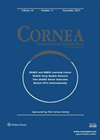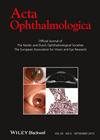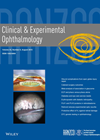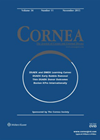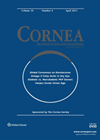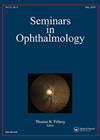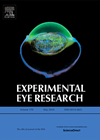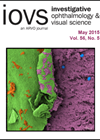
Journal Reviews
Surgical complications of ReLEx
Femtosecond laser refractive lenticule extraction (ReLEx) is a novel procedure for treatment of myopia and myopic astigmatism, which eliminates the use of microkeratome and excimer laser. Currently there are two techniques: FLEx – femtosecond lenticule extraction (similar to conventional LASIK)...
How to achieve 1% solution of Lissamine green
Lissamine green (LG) concentration of 1% is clinically effective in the diagnosis of ocular surface disease. LG is now commercially available only in a form of dye-impregnated strips, whose concentration is insufficient. This study examined how to achieve 1% concentration...
Confocal microscopy and corneal graft rejection
Forty-five patients following penetrating keratoplasty (PK) were examined with the HRT III Rostock Cornea Module confocal microscope at various points after their surgery for two years. Activated keratocytes (AKs) were counted manually and their mean number evaluated. A pattern was...
Climatic droplet keratopathy
Climatic droplet keratopathy (CDK) is an acquired and potentially handicapping corneal degenerative disease that is highly prevalent in certain rural communities around the world. It predominantly affects males in their 40’s and is known by many other names such as...
Clinical characteristics and outcomes of open globe injury
This retrospective cohort study examined consecutive open globe injuries at a tertiary referral centre over a three year period. The aim of the study was to detail the clinical characteristics of open globe injuries and to explore their association with...
Same day air bubble removal after DSEK/DSAEK
A complete air removal on same day as descemet’s stripping endothelial keratoplasty (DSEK/DSAEK) leads to prompt restoration of the anterior chamber and thus has been hypothesised to assist with the recovery of endothelial function and promote graft adhesion. The results...
The impact of collagen crosslinking on keratoplasty numbers in keratoconics
A question of corneal cross-linking (CXL) reducing keratoplasty numbers in keratoconics was addressed in this single centre observational study from the Oslo University Hospital – a sole provider of keratoplasties and CXL for a population of 2.8 million. Authors compared...
Cyclosporine A and pterygium fibroblasts
The matrix metalloproteinases (MMP) are a family of structurally related zinc-dependent extracellular matrix degrading proteinases that have been implicated in facilitating the migration and growth of pterygia. Both MMP- 3 and MMP-13 were found to be overexpressed in the fibroblasts...
Silicone hydrogel contact lenses versus autologous serum drops for dry eyes in Sjörgen syndrome
A total of 37 patients with Sjörgen syndrome (SS) related dry eyes reporting symptoms on standard therapy with artificial tears and anti-inflammatory drops were evaluated in this trial. They were randomly assigned to additional treatment with either balafilcon A silicone...
Non-contact-lens-associated acanthamoeba keratitis
This retrospective study was done to study the clinical presentation and microbiological results of non-contact-lens-related acanthamoeba keratitis (AK). One hundred and ninety-four patients with microbiological / histopathological diagnosis of AK over four years were included. All patients had corneal scrapings...
γδ T cell depletion does not affect fungal keratitis
Fungal keratitis (FK) is a blinding condition prevalent in agricultural areas of countries such as India and China. The fungus enters the cornea and induces an inflammatory response which leads to tissue damage. Neutrophils are the earliest infiltrating immune cells...
The impact of conjunctivochalasis on dry eye symptoms and signs
The study aimed to draw a relationship between conjunctivochalasis and dry eye symptoms via a dry eye questionnaire (DEQ5), as well as signs such as tear osmolarity, tear break up time, corneal staining, Schirmer score, meibomian gland dropout, eye lid...


